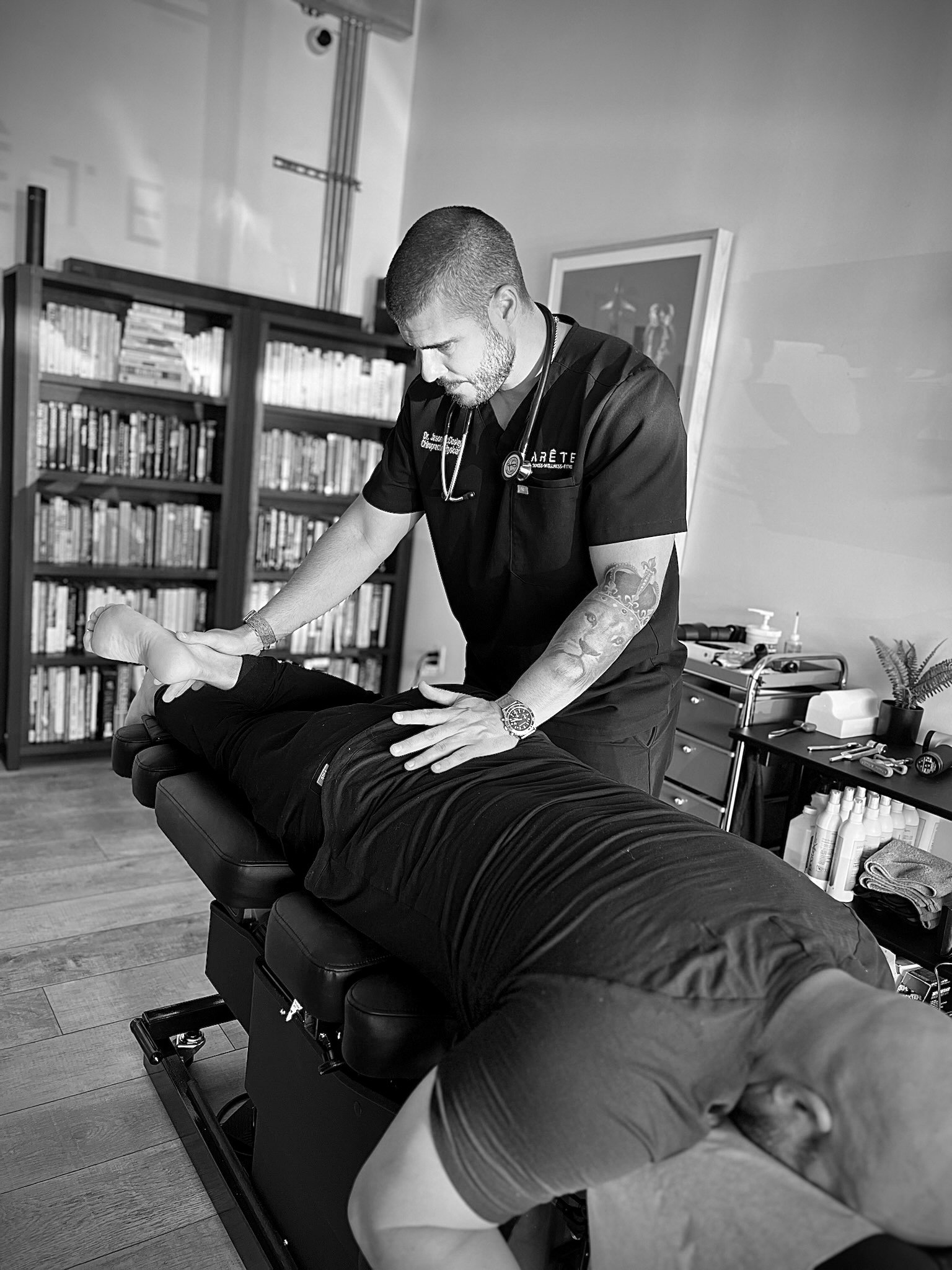
Osteoarthritis
Non-Surgical, Non-medical Solutions for osteoarthritis
For patients with mild to moderate osteoarthritis, our multidisciplinary program uses a combined therapy approach to offer a minimally invasive treatment option for pain-free movement and improved overall health compared with long-term NSAID use or surgical joint-replacement procedures.
60%
Osteoarthritis prevalence and incidence
Structural OA of the hands is reported in around 60%, of the knee in 33%, and of the hip in 5% of adults 65 and older in North America and Europe. Individuals who develop symptomatic OA in one joint are more likely to have multiple joint involvement, and this predisposition manifests clinically as a condition known as generalized OA. This typically involves the joints of the hand, as well as the cervical and lumbar spine, hip and knee joints. 50% of patients with structural knee OA and an even greater number proportion of those with structural hip OA experience pain.
1-4%
osteoarthritis is Found in More Women than in Men
Structural OA is more frequent among women than men at any given age >50 years, with the sex difference most pronounced for hand and knee OA. The risk factors for OA can be divided into those that act at the level of individual susceptibility and those that alter the biomechanical stability of individual joints. Person-level risk factors include increasing age, female sex, joint biomechanics, genetic factors, and adiposity. The predominant joint-level factors are joint injury, repetitive joint use through occupation or leisure, and joint malalignment.
300-400%
osteoarthritis and increased body fat percentage
Obesity is a well-established risk factor for the development of and progression of OA. In weight-bearing joints, such as the knee, body fat has been shown to be a better predictor of cartilage loss, independent of fat-free (muscle) mass. Moreover, the risk of knee and hip joint replacement for OA was three-fold to fourfold higher in individuals in the highest quartile of fat mass. Similarly, the Nurses’ Health Study demonstrated a more than fivefold increased risk for progressing to hip replacement in later life among 18-year-olds in the highest compared to the lowest BMI categories.

“Osteoarthritis (OA) is the most common degenerative joint disorder that affects one or several diarthrodial joints, including small joints (such as those in the hand) and large joints (such as the knee and hip joints). Clinicians did not recognize OA until the late eighteenth century and further nomenclature confusion delayed its recognition as it was considered the same entity as rheumatoid arthritis. To date, OA remains challenging to treat and its definitions, risk factors, and pathophysiology are still evolving. Cardinal signs include pain, transient morning stiffness and crepitus on joint motion (a grating sound or sensation produced in the joint) that lead to instability and physical disability, thus impairing quality of life (QoL). OA can be classified as primary (or ideopathic) and secondary (based on the attribution to recognized causative factors, such as trauma, surgery on the joint structures and abnormal joints at birth, to name a few). Primary OA results from a combination of risk factors, with increasing age and obesity being the most prominent. Other risk factors include knee malalignment increased biomechanical loading of joints, genetics, and, as recently suggested, low-grade systemic inflammation.
OA is defined as a group of overlapping distinct joint disorders with similar biological, morphological and clinical outcomes. The definition of OA was long centered on the changes in the articular cartilage. This concept has evolved and OA is now considered a disease of the whole joint, including alterations in the articular cartilage, subchondral bone, ligaments, capsule and synovial membrane, ultimately leading to joint failure. Among the structural damages to the joint (that is, structural OA), are loss of cartilage, osteophyte formation, subchondral bone changes and meniscal alterations, some of which can be visualized using radiography, whereas all the above-mentioned can be seen using MRI. These alterations could be accompanied by joint pain (that is, symptomatic OA). Disease evolution in OA is usually slow and can take several years to develop. In turn, this disease could also undergo phases or demonstrate a progressive evolution over time, leading to a worsening of disease severity and symptoms.” DOI:10.1038/nrdp.2016.72
Osteoarthritis
Clinical Program:
We can help.
Our Osteoporosis program has been designed to help both local and out of town patients of all ages and abilities. Depending on the severity and needs of the patient, a two-pronged approach will be taken to 1) address the metabolic health of the patient, and 2) to address movement and exercise. 24-36 sessions over 3-6 months will be prescribed along with weekly home exercise prescription. For patients who have already been prescribed medications, or who have already undergone surgical procedures, we offer a modified program to optimize movement and minimize post-surgical neuro-musculoskeletal compensations and pain. Advanced diagnostics may be required including laboratory diagnostics and diagnostic imaging.
New Patient Application >Individualized Care
Our comprehensive formative evaluation includes multiple questionnaires, a physical examination, functional movement screen, diagnostic computerized posturography, diagnostic imaging, laboratory diagnostics, and more, which identify baseline capabilities and deficits related to motor function and overall health, including underlying factors related to the patient's complaints and goals. Active patients will also recieve our entire research catalog regarding their specific condition upon request at any time throughout their care plan, as well as additional learning resources, as part of our commitment to patient education and empowerment. Patients may also opt-in to our health coaching program for an in-depth experience where they can learn more about their condition and gain personalized insights that encourage and equip them for better health. Advanced Diagnostics
We combine the latest research-supported evaluations and treatments with broad-based diagnostic testing performed in our office, as well as partnering with local imaging centers and the top laboratory diagnostic brands in the country. We implement these diagnostics to provide each patient with an individualized care plan designed to address their specific impairments or goals. The patient’s care plan includes an intensive regimen of in-office and customized at-home exercises that facilitate accelerated improvement. Treatments are scheduled based on the specific needs of the patient and progress is measured frequently against the formative assessment. Treatment plans are refined as progress improves to achieve the best possible results.Breakthrough Therapies
We are proudly recognized as a go-to destination for patients who've been treatment-resistant with other approaches. Our innovative take on common therapies help restore impaired function by leveraging the body’s inherent ability to repair, compensate, learn and adapt through passive physiotherapy, chiropractic, and active corrective exercises. This unique, combined-therapies approach targets affected areas with specific activities to decrease pain, restore normal movement, neuromuscular functioning and improve performance. Progress testing provides continuous feedback on improvement or success. Follow up and at-home exercise prescription help to optimize improvement times and minimize in-office visits required for full improvement. 




